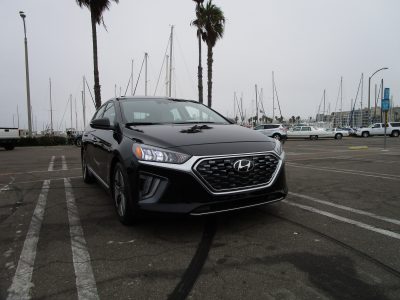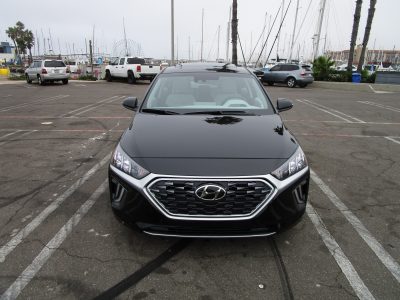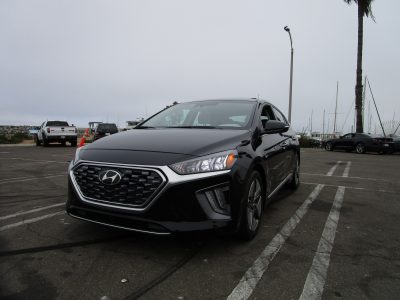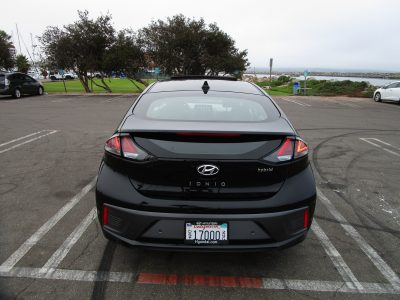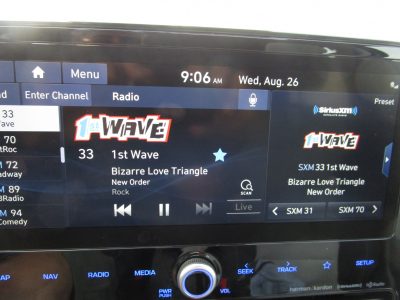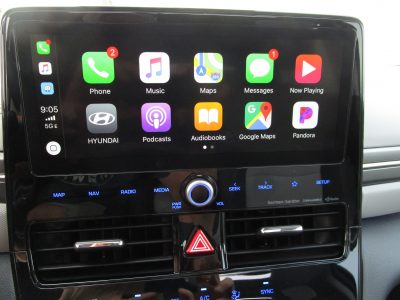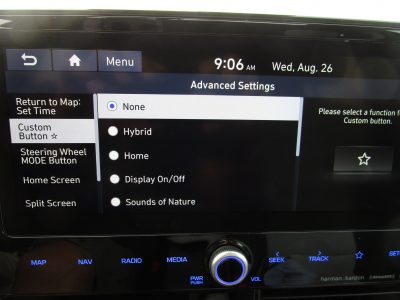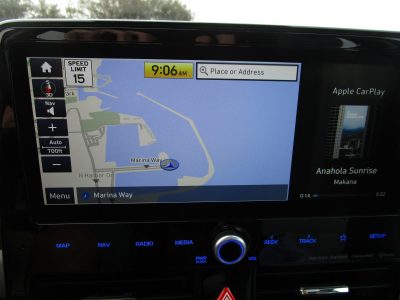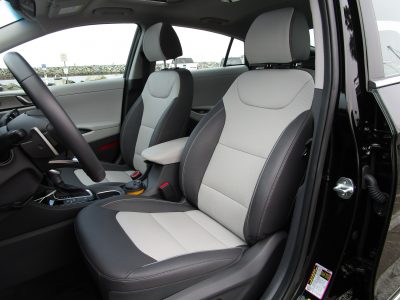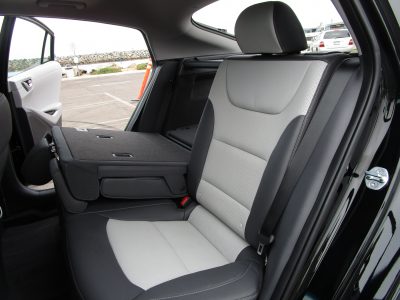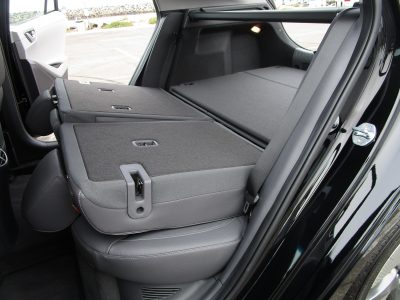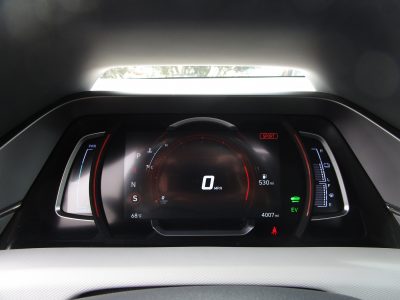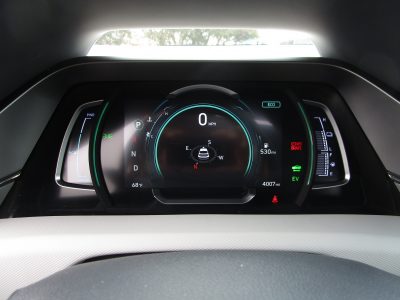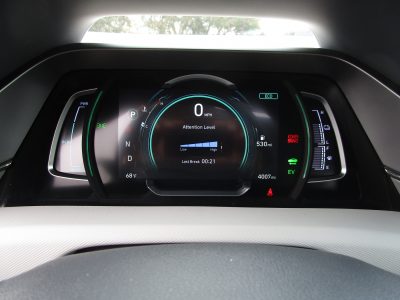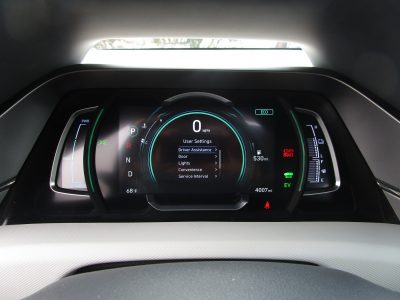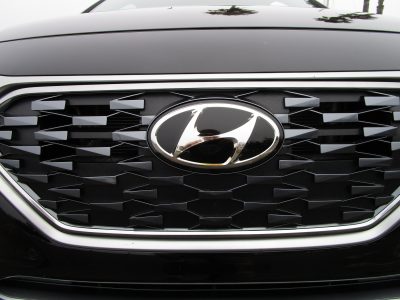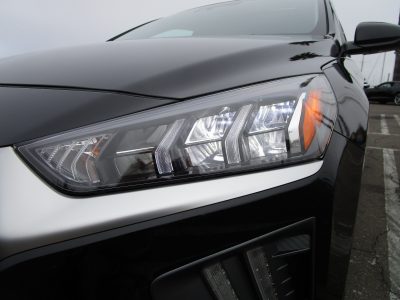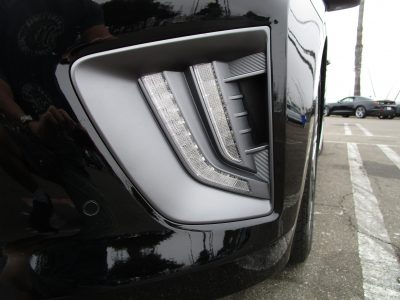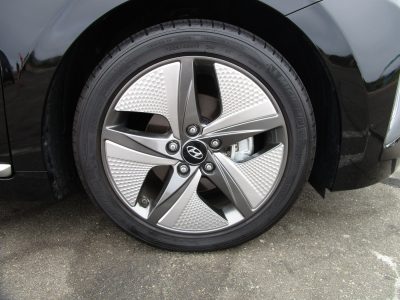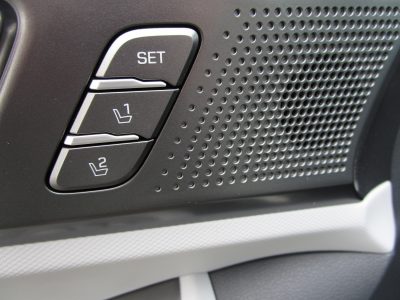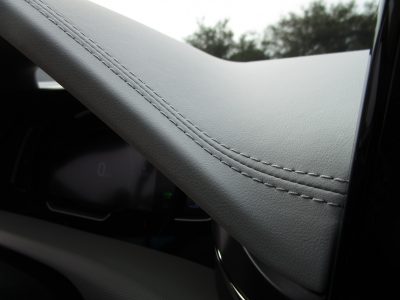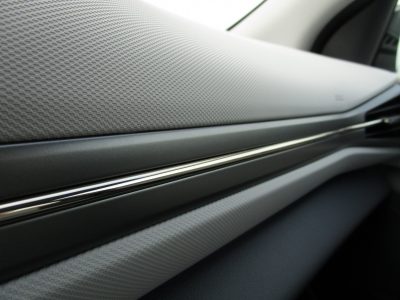It’s interesting how popular hybrids are these days. Historically, gas is relatively cheap, and with the pandemic, lots of people are driving less. Seems like a good excuse to get something crazy like the 485-horsepower Dodge Charger Scat Pack we recently tested. But no, being frugal, and eco-friendly seem to be trends that are not going away.
So, we decided to test one of our favorite hybrid vehicles, the Hyundai Ioniq. And although the Korean carmaker was later to the market with this kind of vehicle, it has quickly become a major challenge to the Toyota Prius. Let’s see why.
Progressively Styled
For 2020, the Ioniq has shed some of the agrarian looks that reminded us of the previous-gen Prius, to look more modern and upscale. The new mesh-type grille is very Hyundai, and the LED headlamps and taillights fold into the new fascia for a clean modern look. Out back is the rear window with a split lower portion ala Honda CR-X or Lamborghini Espada.
New side sills give a sleeker profile, while our tester’s new 17-inch alloy wheels look like a weapon out of a Ninja’s arsenal. Finishing off the look was our Limited’s Black Noir Pearl paint, that made it look part elegant, and part badass. Not bad for a hybrid!
Upscale Comforts
Inside, the Ioniq feels notably more upscale, especially in our tester’s Limited trim. One of the first things you notice is the massive 10.25-inch info-tainment screen, up from a paltry 8-inch last year. In a smaller vehicle like this, it looks Lexus huge, and Lexus upscale. With Apple CarPlay, our WAZE app looked big and bright – a pleasure to use.
It’s also a pleasure to listen to, with a new 8-speaker Harmon Kardon premium audio system (previously Infinity), and a pleasure to look around, thanks to new ambient interior lighting. The upscale vibe continues with a tasteful two-tone gray interior which brightens up the cabin – but the light colored top of the dash reflects into the windshield, making it hard to see out in direct sunlight. The solution is easy – opt for the black interior instead.
Whichever color you go for, you’ll sit in lovely leather-wrapped heated seats with memory function, a modern and crisp 7-inch LCD display that changes with driving modes, a fat D-shaped leather-wrapped steering wheel, and touch controls bathed in a soft blue light. Speaking of touch, an electronic parking brake adds to the luxo feel. And there’s lovely stitching throughout the cabin, and textured materials that elevate you sense of value for dollar. You feel surrounded by goodness.
The Quest for Fuel Efficiency
So far so good. But how’s it drive? Well, honestly, it’s a lot of fun! And certainly, more involving than the Prius, which is in the Ioniq’s crosshairs.
Power is supplied by a 1.6-liter, 4-cylinder combined with a synchronous AC motor, to give a combined 139 hp, which is okay, but it’s the 195 lb.-ft of torque that gives the Hyundai hybrid plenty of low-end oomph. And since you’re wondering, we easily saw over 50 mpg in our tester, pretty phenomenal.
And unlike the CVT transmission you find in most fuel-sippers, the Ioniq has an excellent 6-speed dual clutch automatic trans – and like other Hyundai/Kia products, the DCT offers quick shifts, and is extremely responsive especially in Sport mode. While most Ioniq buyers probably aren’t in it for the sportiness, for those who love to drive, it makes this a lot of fun.
Added fun comes from paddle shifters – new for 2020. In Regular mode, they let you call up 3 levels of regenerative braking, not quiet as binder-stomping like the Nissan LEAF, but it still helps charge the battery, and lets you do most of your driving without having to touch the brake pedal, which is cool. Put the drive mode into Sport, and the paddles let you shift gears, adding to the responsiveness.
While the powertrain is sporty, the chassis is designed for comfort, and the ride is notably smooth and relatively quiet – there is a bit of noise that comes in through the hatch and tires at freeway speeds – or maybe it’s just more noticeable with the car being so quiet in EV mode on the streets. The Ioniq feels light on its feet, being an easy handler that makes maneuvering around town a breeze.
Long drives are a piece of cake in the Ioniq, with loads of advanced tech on board. The Smart Cruise Control now includes the Stop & Go feature, and the SmartSense system includes Forward Collision Avoidance with Pedestrian Detection, Lane Follow Assist and Highway Driving Assist. The Hyundai system works exceptionally well, keeping you in your lane easily, and distance from other traffic.
Save the Planet, Save the Wallet?
The nice thing is many of the changes for 2020 go across the Ioniq board. So you don’t have to go whole enchilada like our tester to enjoy Hybrid goodness. The Ioniq Blue starts at just $23,200 and gives nice things like an 8-inch touchscreen, Android Auto and Apple CarPlay, proximity key with pushbutton start and Forward Collision Avoidance. Best of all, it has a 58 mpg EPA combined rating. Thrifty!
At the other end is our leather-lined Limited model that has that 10.25 inch touchscreen, Harmon Kardon Audio, pano sunroof and more, at $31,200. With no available options, plus destination our tester rang the bell at $32,175.
Competitors would include the Prius Limited, at $34,160 – that extra couple grand could go a long way on the Ioniq’s fuel bill. You could also think about the Kia Niro, with the Premium starting at $32,790, but you’re paying about $1,500 over the Ioniq for some added SUV capability.
Also worth noting, there is also an available Ionig Plug-in Hybrid, and full-on Ioniq EV as well.
For our money though, the Ioniq hybrid fits the bill.
Fantastic economy, comprehensive luxury, and surprisingly fun to drive, the 2020 Hyundai Ioniq is a great choice – even if you’re not looking for a hybrid!
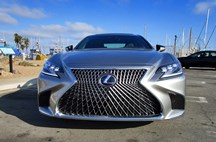
Ben Lewis grew up in Chicago, and after spending his formative years driving sideways in the winter – often intentionally – moved to sunny Southern California. He now enjoys sunny weather year-round — whether it is autocross driving, aerobatics, and learning to surf.


